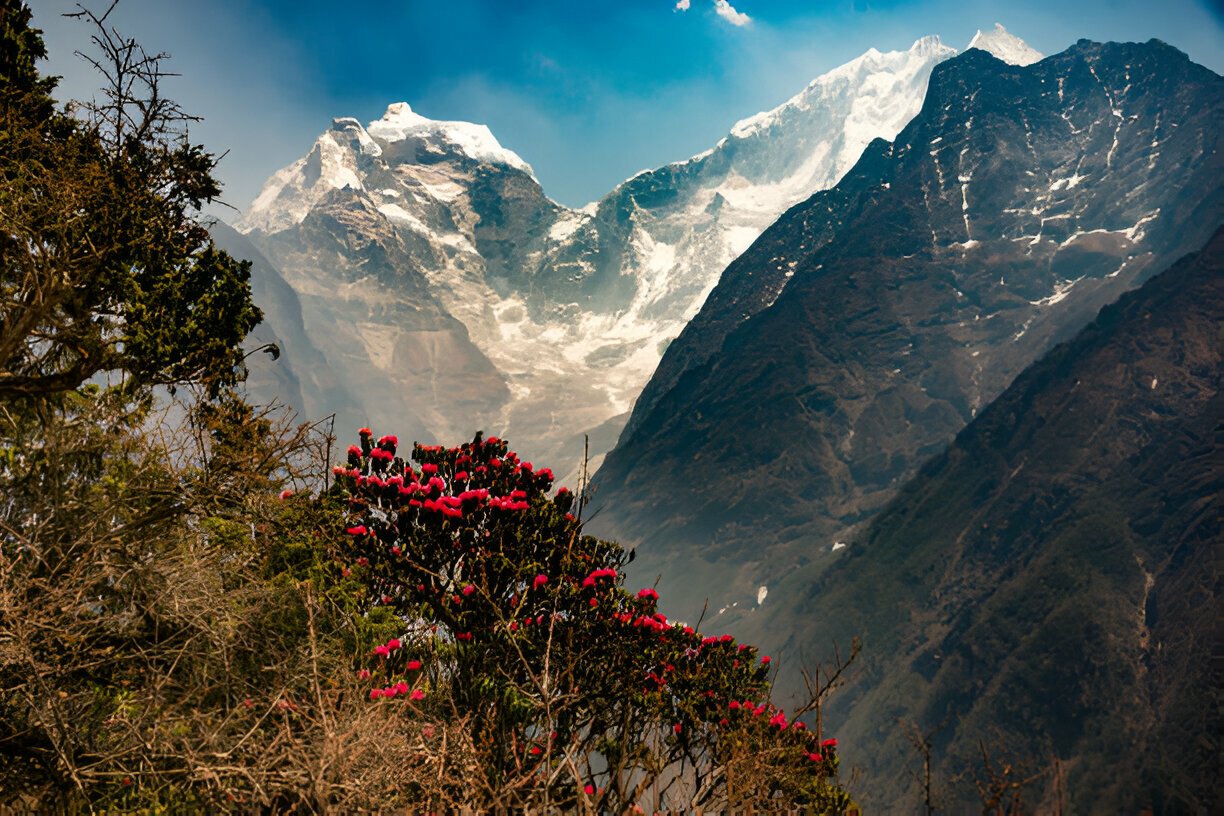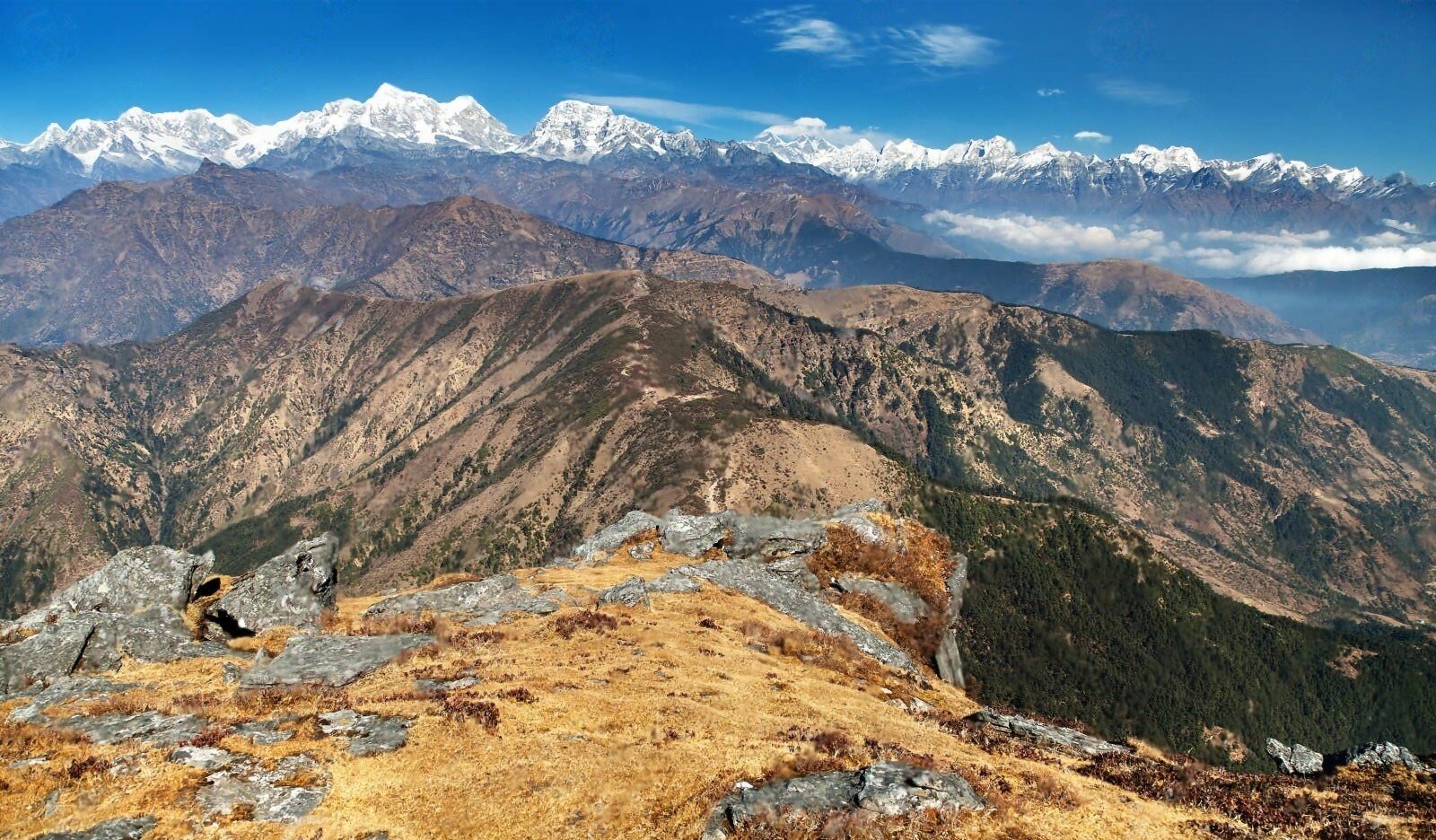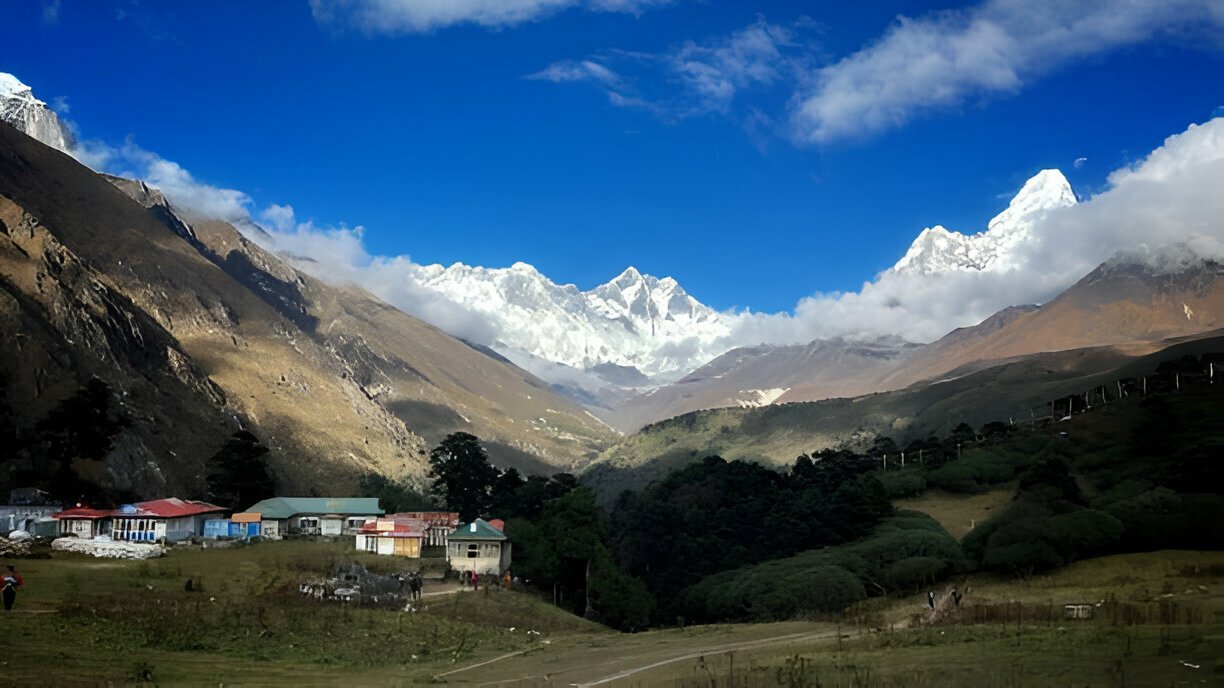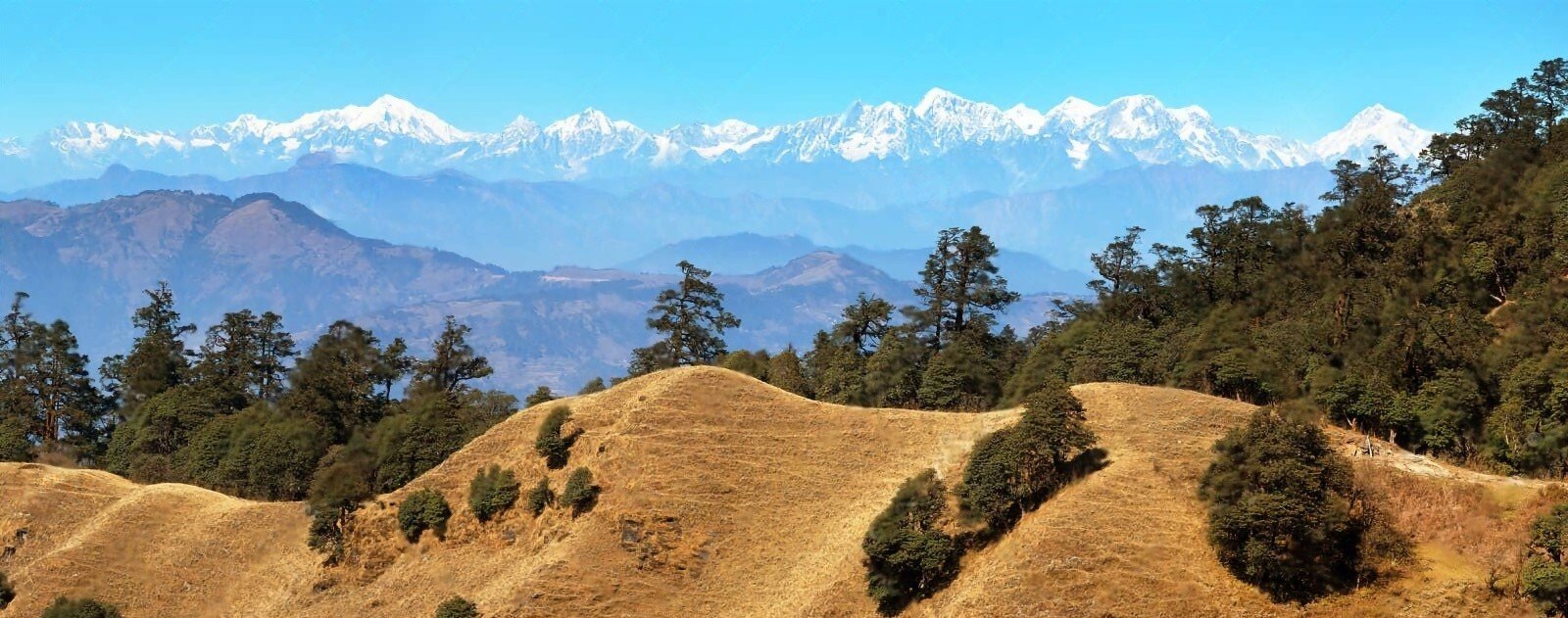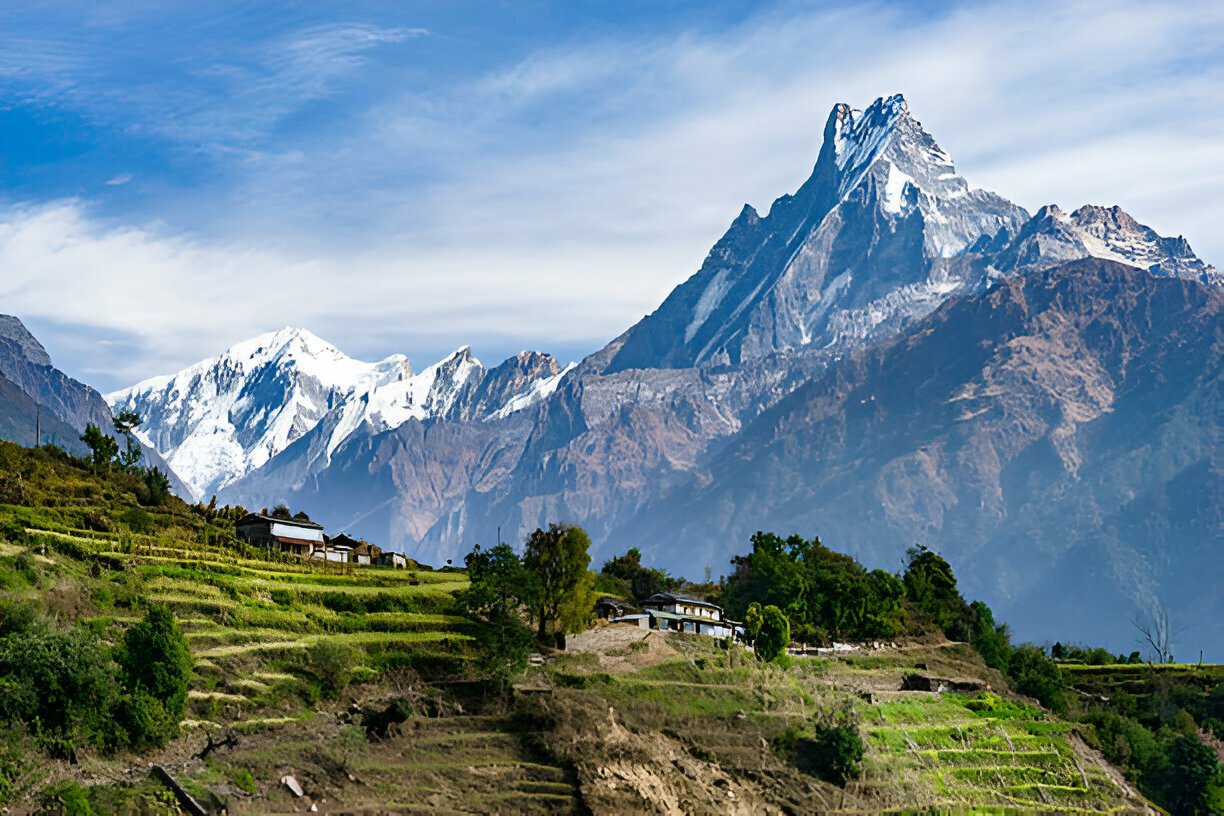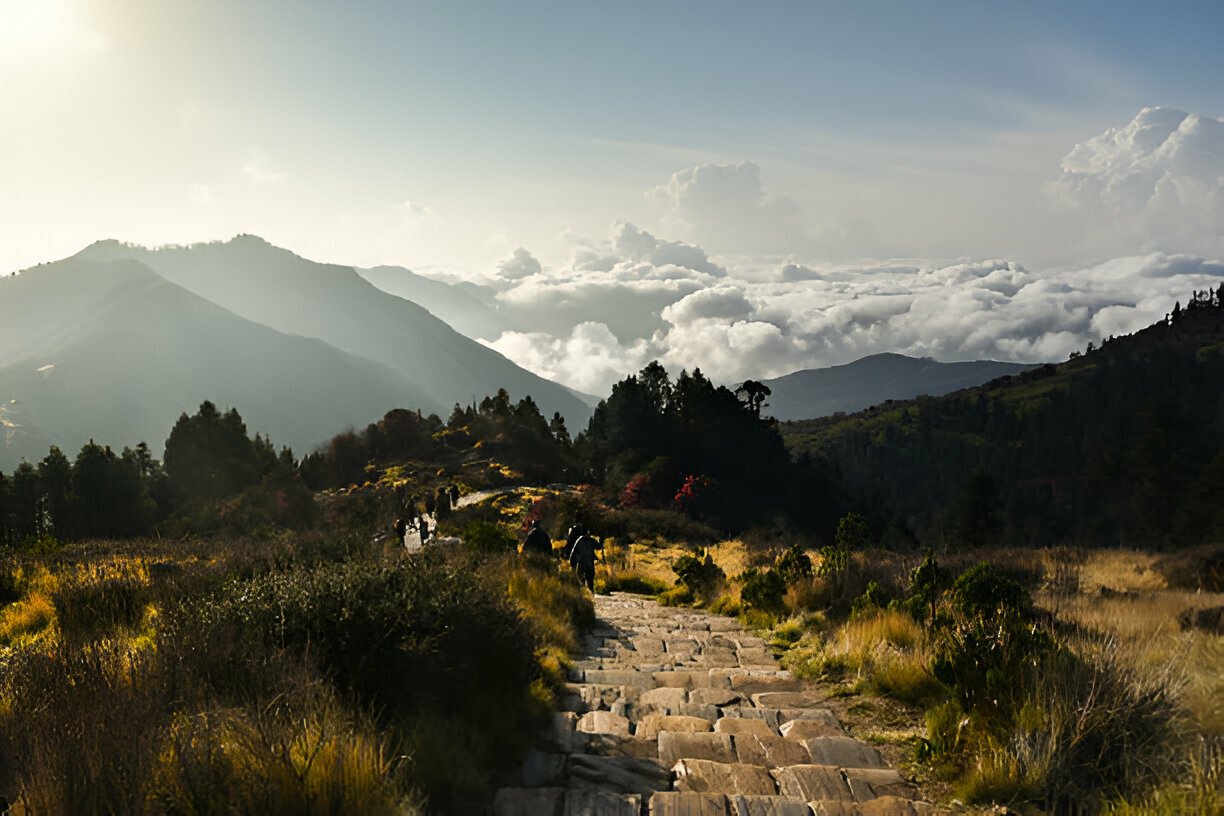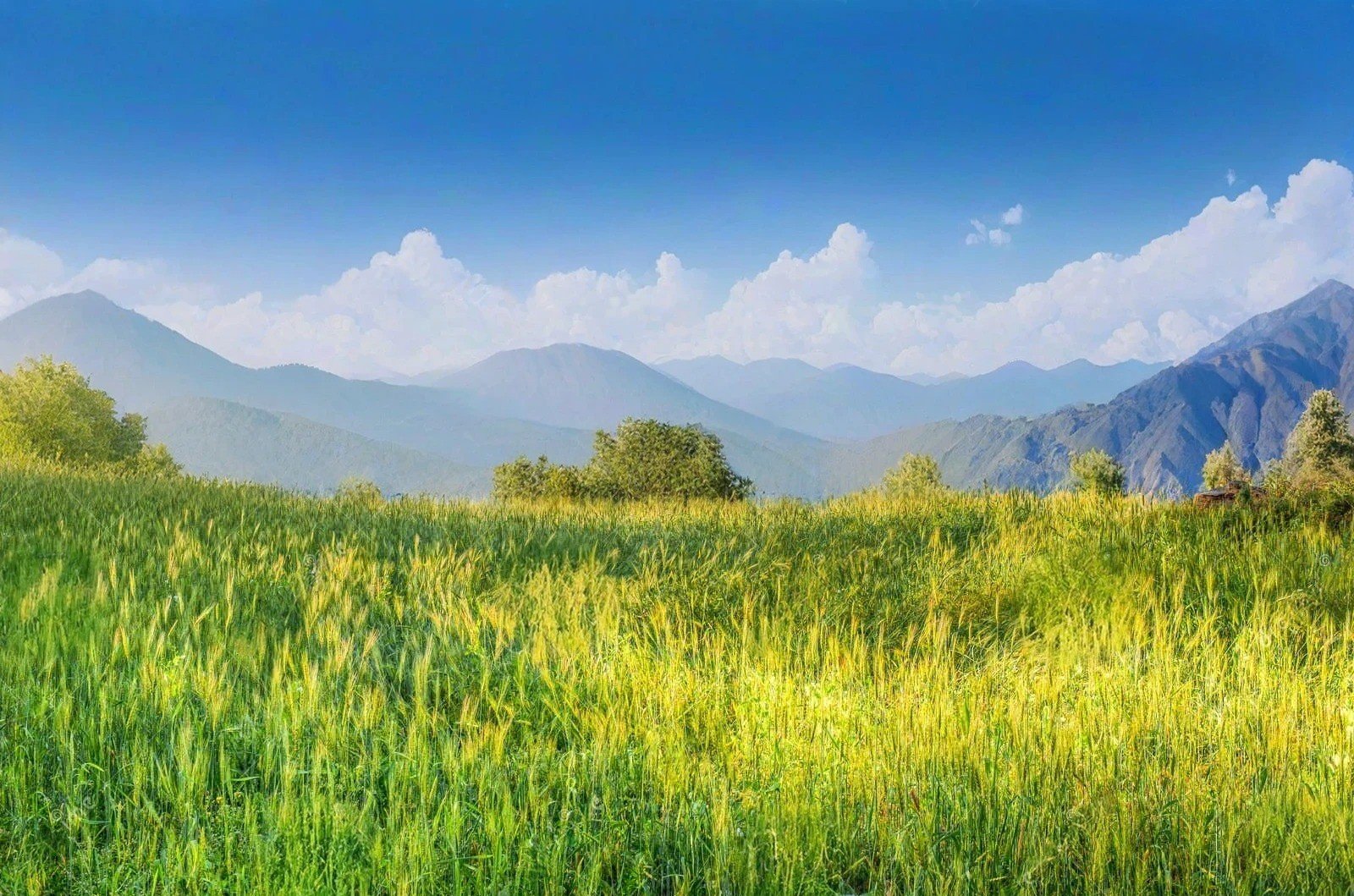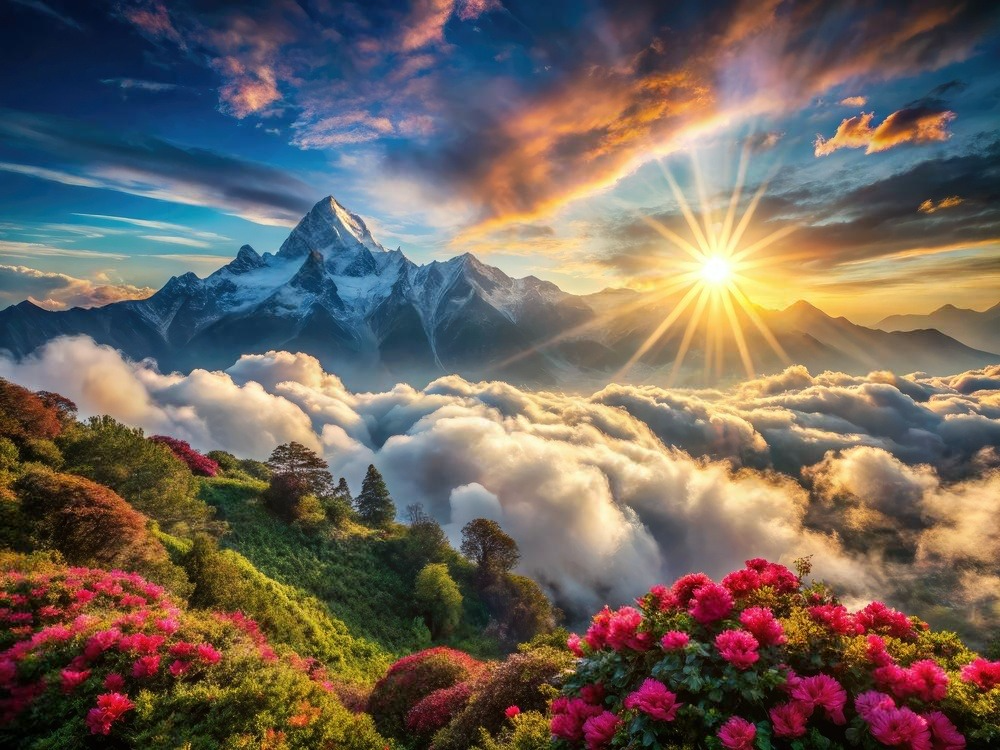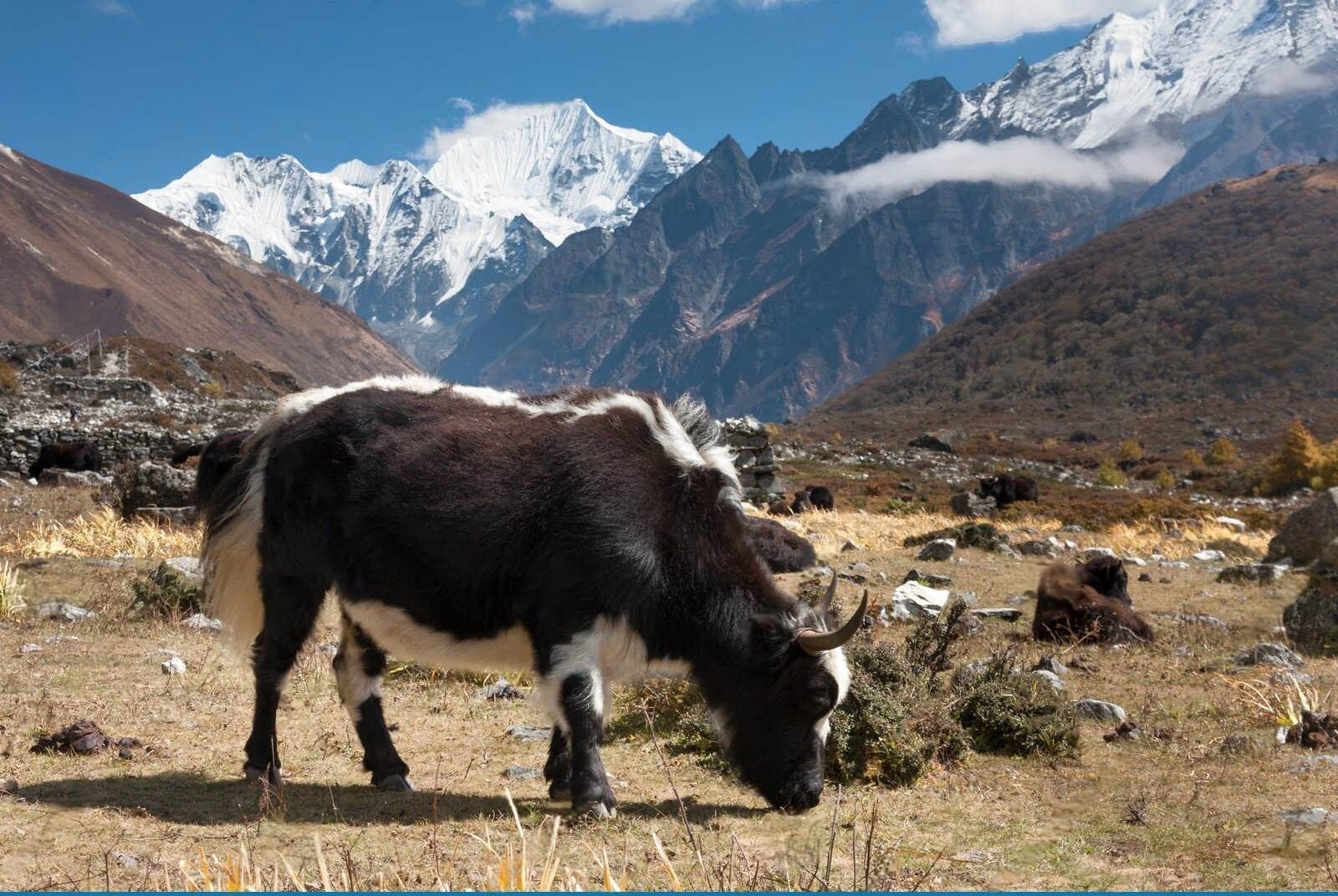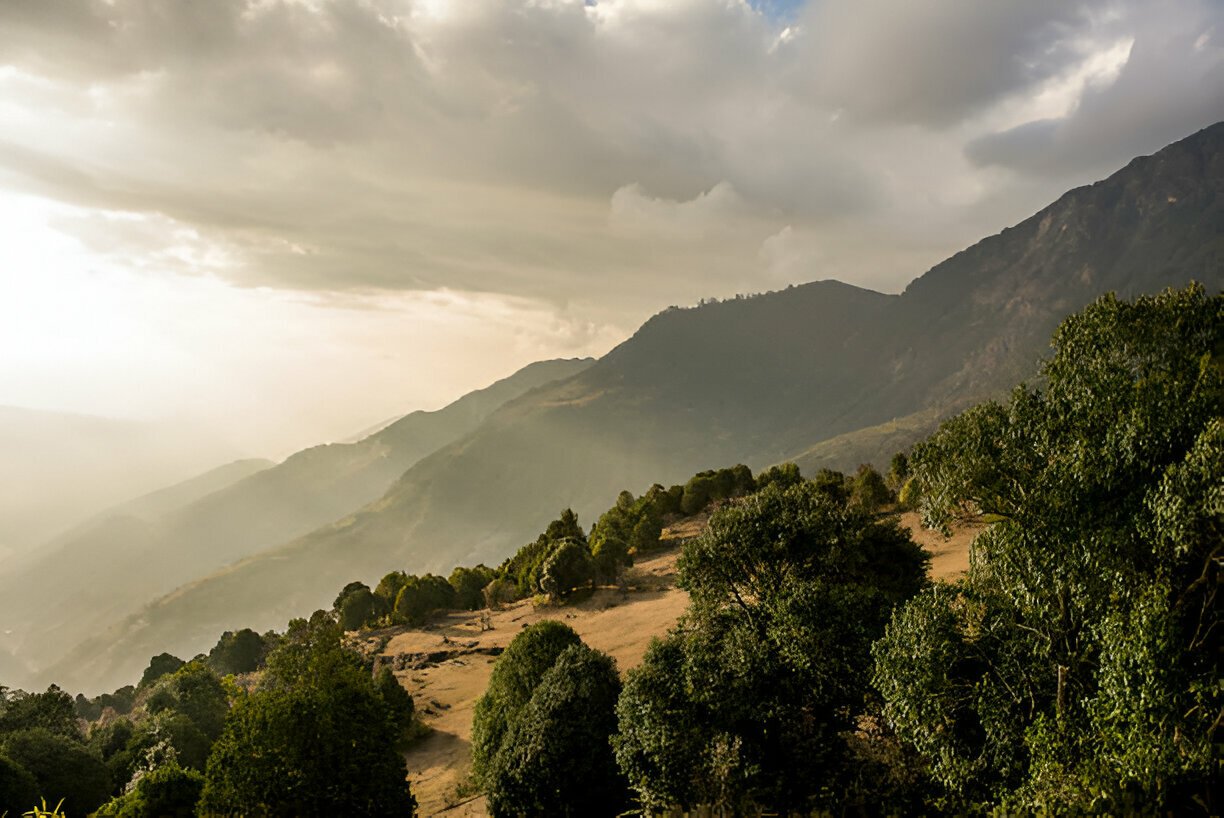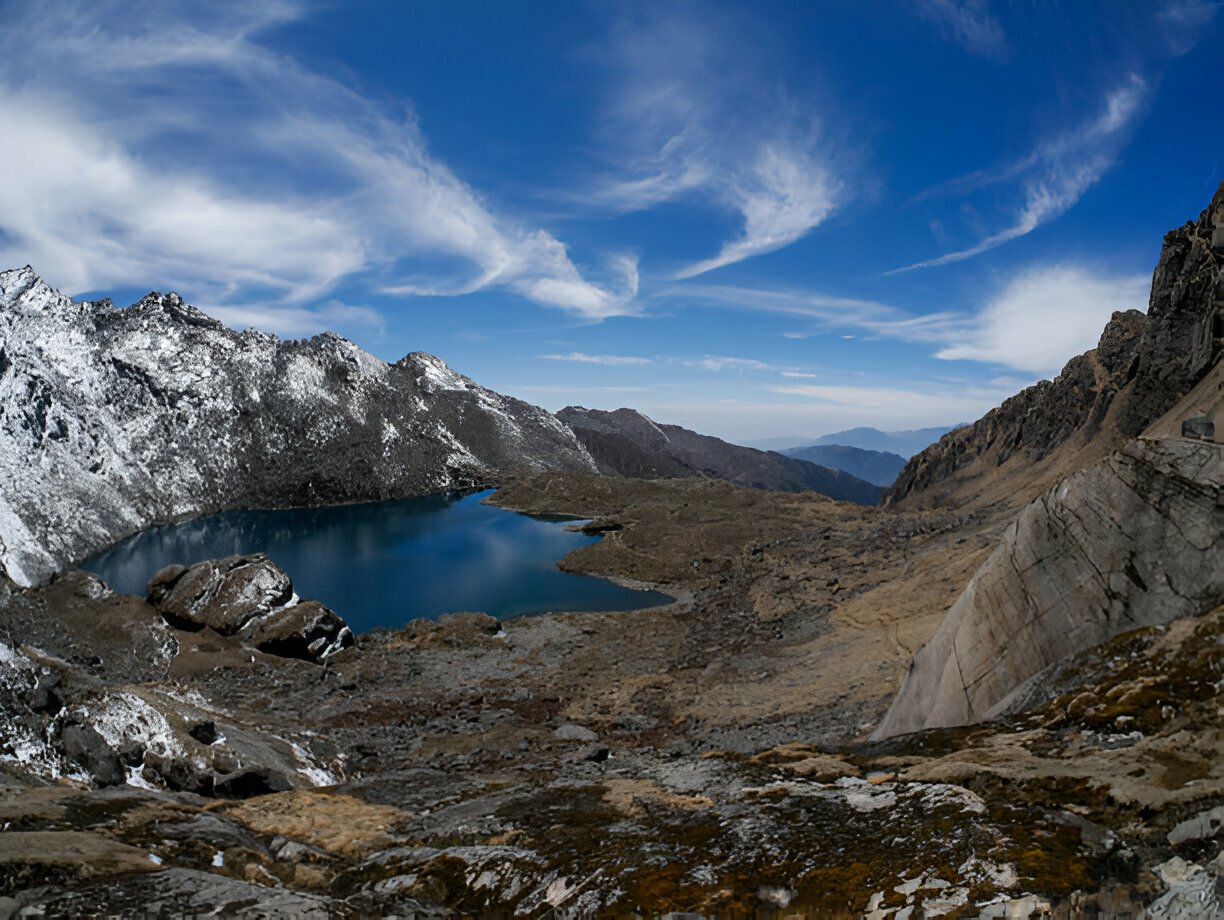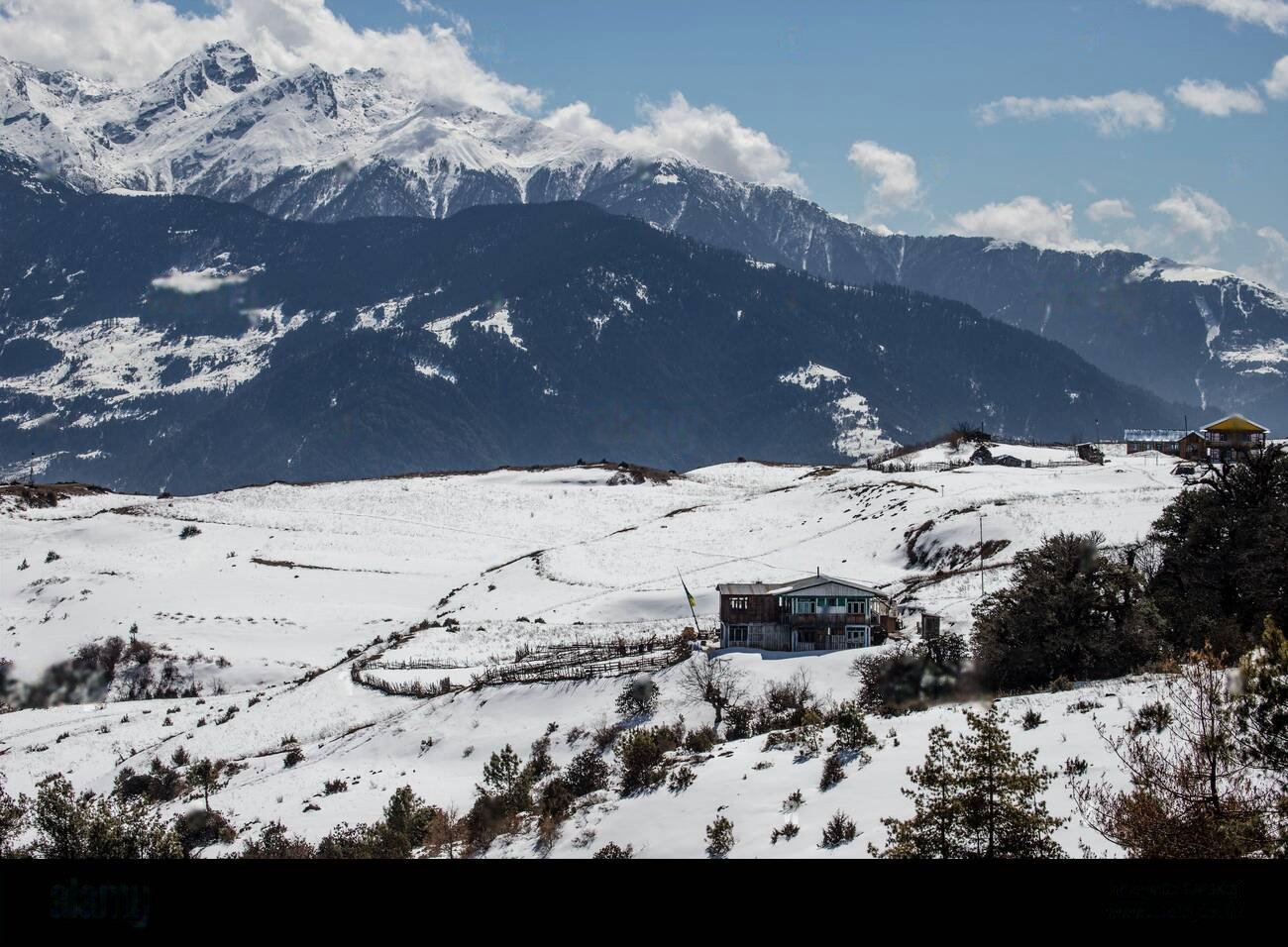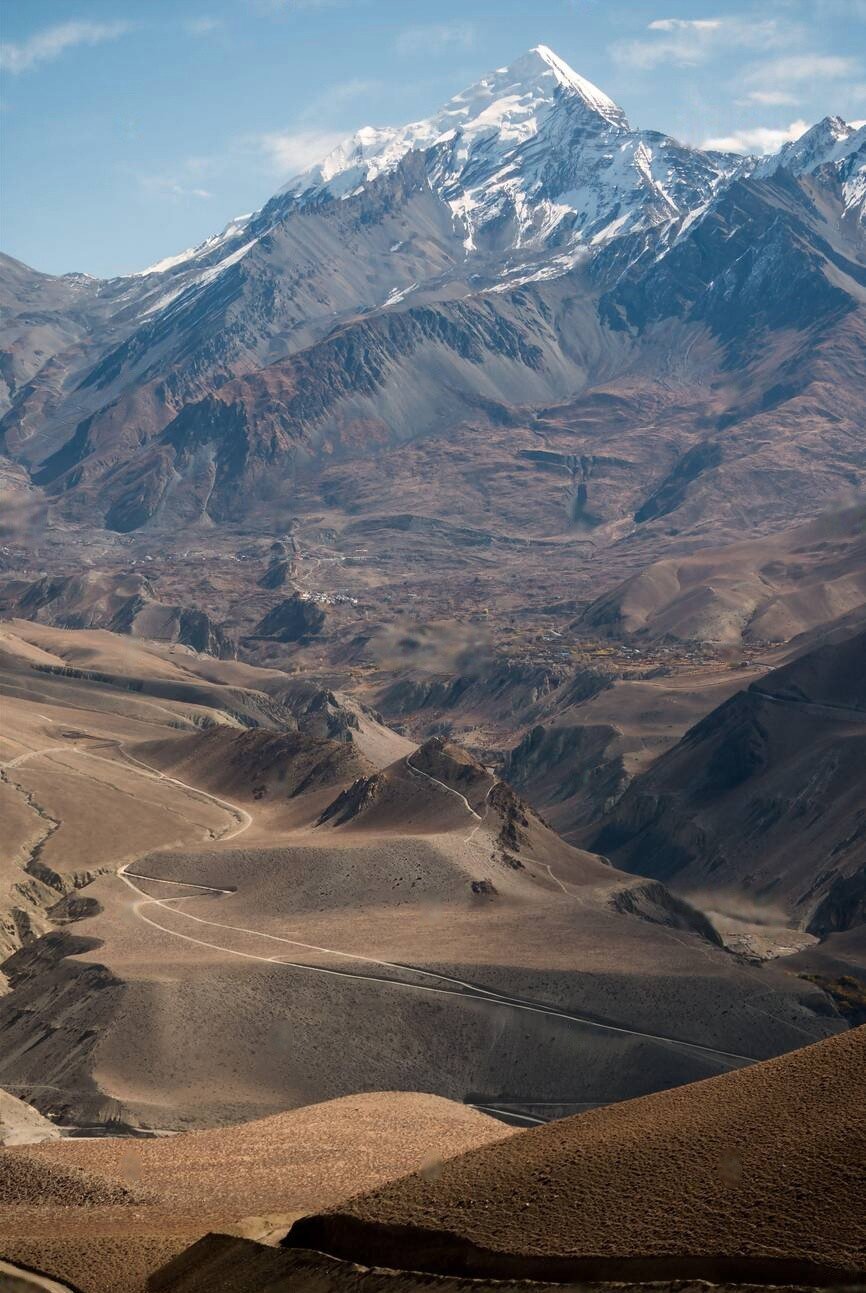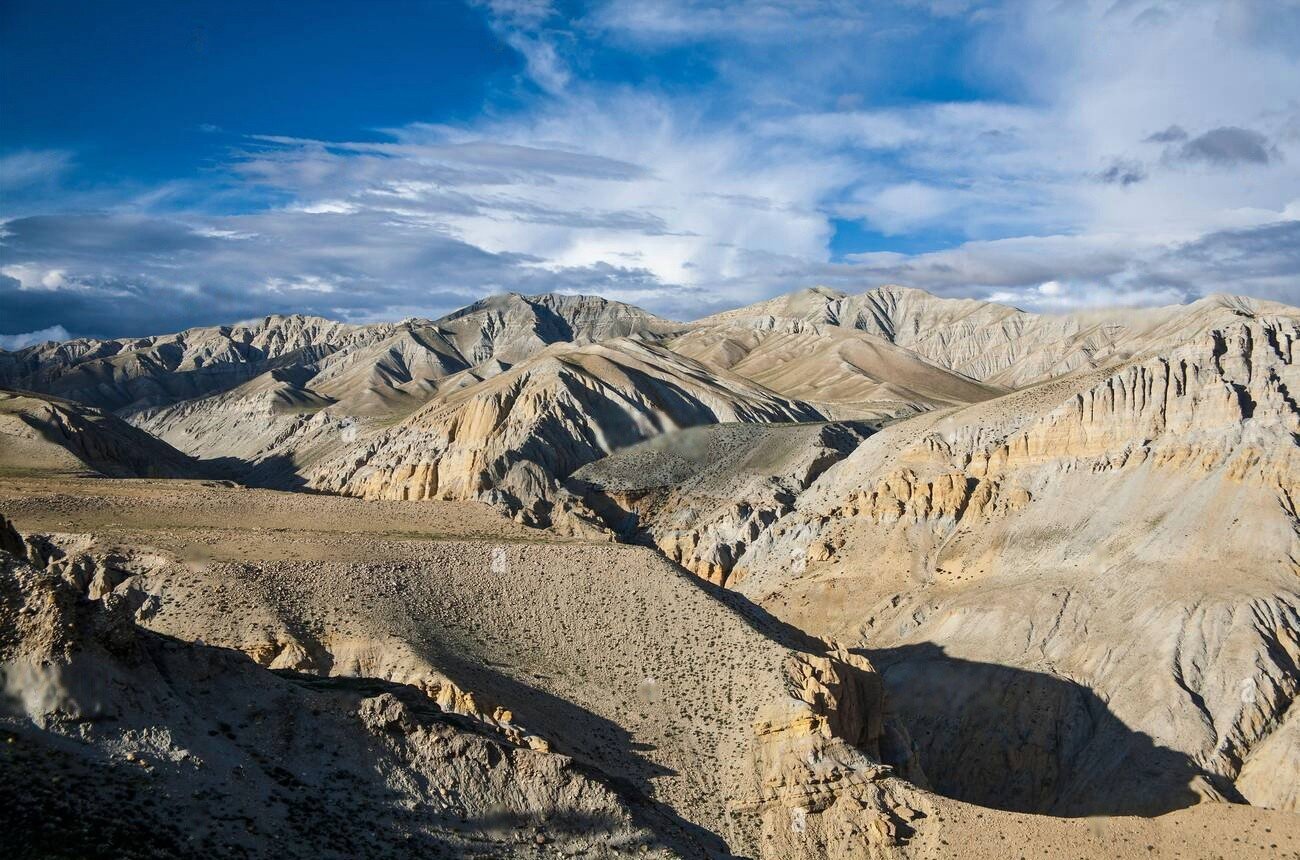 About this Trip
About this Trip
The Lower Mustang Trek represents a remarkable journey through one of the Himalaya's most fascinating transitional zones, offering an experience that combines dramatic landscapes, rich cultural heritage, and extraordinary geological features. What distinguishes this trek is its perfect balance of accessibility and authenticity, providing a genuine immersion in Tibetan Buddhist culture without requiring the restricted permits and extended itineraries needed for Upper Mustang.
The trek follows portions of the ancient salt trade route that connected Tibet with the lowlands of Nepal and India, traversing the world's deepest gorge between the 8,000-meter giants of Dhaulagiri and Annapurna. This historic pathway creates a journey of continuous discovery, as trekkers experience dramatic shifts in landscape, vegetation, and cultural influences within relatively short distances. Moving from the subtropical lower reaches toward the arid high-altitude desert, you witness Nepal's remarkable ecological diversity compressed into a compact geographical area.
The cultural dimension of this trek is particularly extraordinary. Lower Mustang exists at the crossroads of Hinduism and Tibetan Buddhism, creating a unique spiritual landscape where both traditions have influenced local customs and architecture. Ancient monasteries perched on hillsides, cave complexes that housed meditating monks for centuries, and villages with distinctive Thakali architecture offer windows into a culture that developed in relative isolation. The Thakali people, renowned for their entrepreneurial spirit and distinctive cuisine, maintain traditions shaped by their historical role controlling this vital trade corridor.
Physically, the trek offers interesting challenges different from many Himalayan journeys. Rather than continuous ascent, the Lower Mustang route involves a mix of dramatic ascents and descents as it follows the contours of the Kali Gandaki valley. The region's location in the rain shadow of the Himalayas creates a dry, windy environment that presents unique trekking conditions, with afternoon winds through the gorge becoming a defining feature of the experience.
Perhaps most distinctively, Lower Mustang creates a sensory journey unlike any other in Nepal. The quality of light in this arid landscape is extraordinary, with sharp shadows and brilliant colors intensified by the clear mountain air. The constant presence of wind, the sound of prayer wheels turning, and the scent of juniper incense at monasteries create a multisensory experience that remains vivid in trekkers' memories long after their journey concludes.
The Lower Mustang Trek represents a remarkable journey through one of the Himalaya's most fascinating transitional zones, offering an experience that combines dramatic landscapes, rich cultural heritage, and extraordinary geological features. What distinguishes this trek is its perfect balance of accessibility and authenticity, providing a genuine immersion in Tibetan Buddhist culture without requiring the restricted permits and extended itineraries needed for Upper Mustang.
The trek follows portions of the ancient salt trade route that connected Tibet with the lowlands of Nepal and India, traversing the world's deepest gorge between the 8,000-meter giants of Dhaulagiri and Annapurna. This historic pathway creates a journey of continuous discovery, as trekkers experience dramatic shifts in landscape, vegetation, and cultural influences within relatively short distances. Moving from the subtropical lower reaches toward the arid high-altitude desert, you witness Nepal's remarkable ecological diversity compressed into a compact geographical area.
The cultural dimension of this trek is particularly extraordinary. Lower Mustang exists at the crossroads of Hinduism and Tibetan Buddhism, creating a unique spiritual landscape where both traditions have influenced local customs and architecture. Ancient monasteries perched on hillsides, cave complexes that housed meditating monks for centuries, and villages with distinctive Thakali architecture offer windows into a culture that developed in relative isolation. The Thakali people, renowned for their entrepreneurial spirit and distinctive cuisine, maintain traditions shaped by their historical role controlling this vital trade corridor.
Physically, the trek offers interesting challenges different from many Himalayan journeys. Rather than continuous ascent, the Lower Mustang route involves a mix of dramatic ascents and descents as it follows the contours of the Kali Gandaki valley. The region's location in the rain shadow of the Himalayas creates a dry, windy environment that presents unique trekking conditions, with afternoon winds through the gorge becoming a defining feature of the experience.
Perhaps most distinctively, Lower Mustang creates a sensory journey unlike any other in Nepal. The quality of light in this arid landscape is extraordinary, with sharp shadows and brilliant colors intensified by the clear mountain air. The constant presence of wind, the sound of prayer wheels turning, and the scent of juniper incense at monasteries create a multisensory experience that remains vivid in trekkers' memories long after their journey concludes.
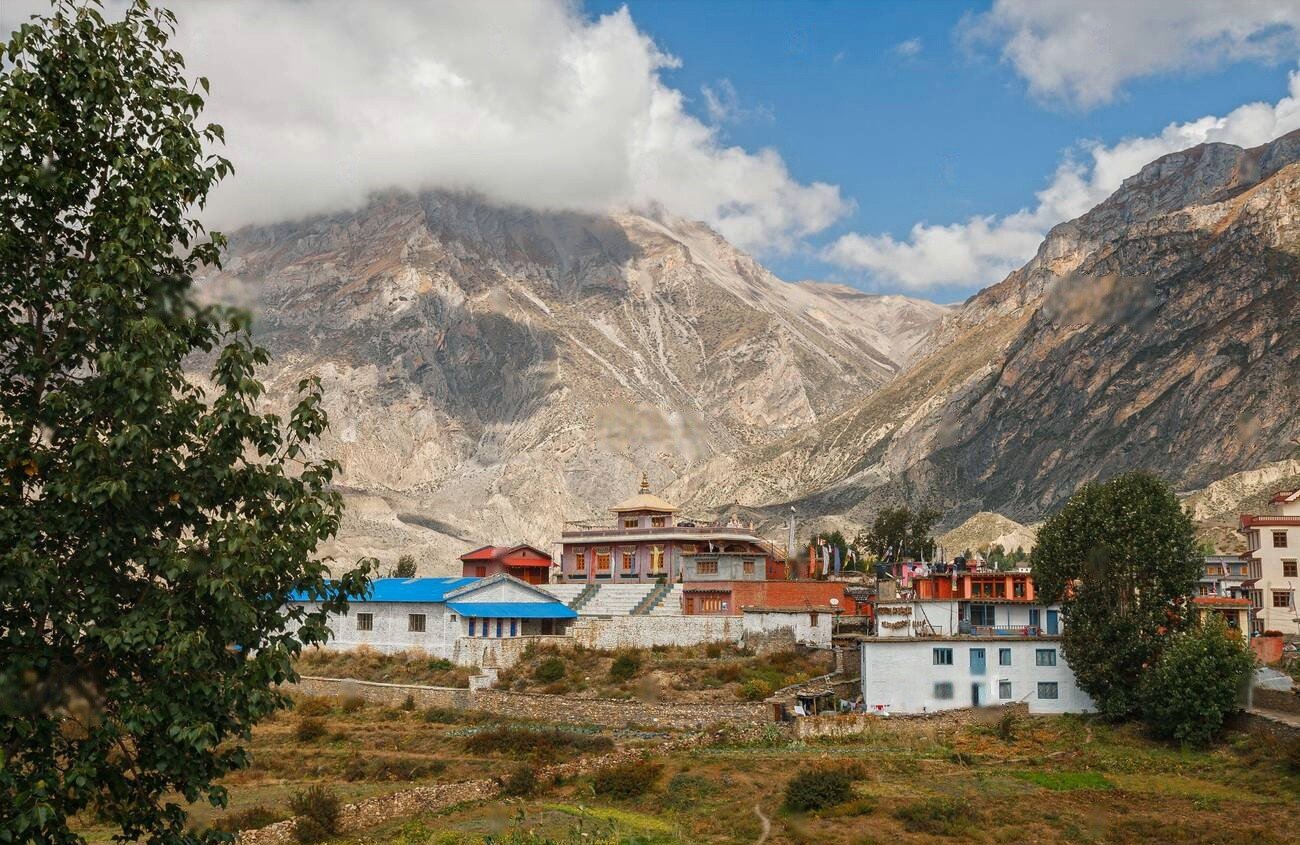
From $0
Price Varies from Group Size
Success
Here goes about why the success toast occurred.
 Itinerary
Itinerary
Arrival in Kathmandu (1,400m)
Your Lower Mustang adventure begins in Nepal's vibrant capital. After airport pickup, settle into your hotel and attend a comprehensive pre-trek briefing with your guide, who will outline the journey ahead through this remarkable trans-Himalayan region. Take time to explore Kathmandu's cultural heritage sites and gather any last-minute supplies. The evening provides an opportunity to enjoy authentic Nepali cuisine and prepare mentally for the trek ahead. Accommodation: Comfortable hotel in Kathmandu with modern amenities.
Kathmandu to Pokhara (820m)
After breakfast, depart for Pokhara by tourist bus, a scenic 6-7 hour journey through the middle hills of Nepal, following river valleys and passing through traditional villages. Alternatively, take a short 25-minute flight for magnificent aerial views of the Himalayan foothills. Upon arrival in Pokhara, enjoy the relaxed atmosphere of this lakeside city with optional boating on Phewa Lake or visits to local temples. The evening offers a last chance to enjoy the comforts of a tourist hub before entering more remote regions. Accommodation: Tourist-class hotel in Pokhara.
Pokhara to Jomsom (2,720m) to Kagbeni (2,810m)
Take an early morning 20-minute flight from Pokhara to Jomsom, one of the world's most spectacular short flights, passing between Annapurna and Dhaulagiri with breathtaking mountain views. The dramatic change in landscape becomes immediately apparent as you land in the arid, windy environment of Jomsom, the administrative headquarters of Mustang district. After organizing trekking permits, begin a 3-4 hour trek to Kagbeni, following the Kali Gandaki river through a broad valley with views of Nilgiri and Dhaulagiri. Kagbeni, a medieval-looking village that guards the entrance to Upper Mustang, features narrow alleyways, a centuries-old monastery, and traditional houses with prayer flags fluttering from rooftops. Accommodation: Teahouse in Kagbeni.
Kagbeni to Muktinath (3,800m)
Today's 4-5 hour trek ascends steadily from the Kali Gandaki valley to Muktinath, an important pilgrimage site for both Hindus and Buddhists. The trail climbs through increasingly barren landscape with dramatic views back toward Kagbeni and the Kali Gandaki valley. As you gain altitude, the panoramic mountain views become more expansive. Muktinath's temple complex features 108 water spouts where pilgrims perform ritual ablutions, an eternal flame fueled by natural gas, and several shrines honoring both Hindu and Buddhist traditions, demonstrating the remarkable religious syncretism of the region. Accommodation: Teahouse in Muktinath.
Muktinath to Jhong to Jomsom (2,720m)
Rather than simply retracing steps down to Jomsom, take a less-traveled route through the village of Jhong. This 6-7 hour journey begins with a visit to the Muktinath temple complex in the early morning, when pilgrims perform rituals and the mountains are clearly visible. Then descend via a different trail to Jhong, featuring a remarkable ancient fortress and monastery with spectacular views across the valley. Continue descending through changing landscapes back to Jomsom overnight, experiencing the famous afternoon winds that blow up the Kali Gandaki gorge. Accommodation: Teahouse in Jomsom with improved facilities.
Jomsom to Marpha (2,680m)
A relatively shorter 3-4 hour walking day follows the Kali Gandaki downstream to Marpha, one of the most charming villages in the region. Marpha is famous for its pristine whitewashed houses with flat roofs and narrow cobbled streets designed to provide shelter from the valley's powerful winds. The village is renowned for its apple products, including juices, brandy, and dried fruit. Visit the local monastery perched above the village and learn about the distinctive culture of the Thakali people, historical controllers of the salt trade through the Kali Gandaki corridor. Accommodation: Teahouse in Marpha.
Marpha to Tukuche to Larjung (2,550m)
Continue trekking downstream for 5-6 hours through the dramatic Kali Gandaki gorge. Visit the traditional village of Tukuche, once a prosperous trading center, with its distinctive Thakali architecture and historic distillery. The trail passes between the towering peaks of Dhaulagiri and Annapurna, which rise more than 7,000 meters above the valley floor, creating the world's deepest gorge. Reach Larjung by afternoon, a small village with traditional architecture and mountain views, situated near mysterious religious caves worth exploring if time and energy permit. Accommodation: Basic teahouse in Larjung.
Larjung to Kalopani (2,530m)
Today's 4-5 hour trek continues following the Kali Gandaki through changing landscapes. The arid terrain gradually gives way to more vegetation as you move south out of the rain shadow. Kalopani offers some of the best mountain views of the trek, with spectacular panoramas of Dhaulagiri, Nilgiri, and Annapurna I, particularly magnificent at sunset and sunrise. The greater vegetation and slightly lower altitude create a noticeably different environment from the previous days' more arid landscapes. Accommodation: Teahouse in Kalopani.
Kalopani to Tatopani (1,190m)
Descend for 6-7 hours through a beautiful forest to Tatopani, meaning "hot water" in Nepali, named for its natural hot springs. The trail follows the increasingly powerful Kali Gandaki river, crossing suspension bridges and passing through traditional villages where the architecture begins to show more traditional Nepali influences and less Tibetan styling. The dramatic descent brings you from arid trans-Himalayan landscapes to lush subtropical environments in a single day, highlighting the remarkable ecological diversity of the region. Upon reaching Tatopani, enjoy a relaxing soak in the natural hot springs to ease your muscles after days of trekking. Accommodation: Teahouse in Tatopani.
Tatopani to Ghorepani (2,840m)
Today presents a challenging 7-8 hour climb of over 1,600 meters through rhododendron and oak forests to the popular trekking hub of Ghorepani. The ascent reveals dramatically different ecosystems from the arid Mustang region, with lush forests that bloom spectacularly with rhododendrons in spring. The trail passes through small farming villages with traditional stone houses and terraced fields, offering a stark contrast to the fortress-like settlements of Mustang. Ghorepani offers comfortable facilities and spectacular mountain views. Accommodation: Teahouse in Ghorepani with good facilities.
Ghorepani to Poon Hill (3,210m) to Tikhedhunga (1,570m)
Rise before dawn for a 45-minute hike to Poon Hill, one of Nepal's most famous viewpoints, to witness a spectacular sunrise over the Himalayan range. The panorama encompasses Dhaulagiri, the Annapurna range, and Machapuchare (Fishtail Mountain), providing a fitting climax to your trekking journey. After returning to Ghorepani for breakfast, descend for 5-6 hours through a beautiful rhododendron forest and traditional villages. The famous stone staircase with over 3,000 steps leads down to Tikhedhunga, challenging you in a different way than the ascents of your journey. Accommodation: Teahouse in Tikhedhunga.
Tikhedhunga to Nayapul to Pokhara
Complete your trek with a 3-4 hour descent to Nayapul, where vehicles wait to return you to Pokhara, approximately 1.5 hours away. The trail passes through Birethanti, a pleasant village along the Modi Khola river, before reaching the road head. Back in Pokhara, enjoy the comforts of hot showers, varied cuisine, and the opportunity to reflect on your extraordinary journey through one of Nepal's most culturally and geographically diverse regions. Accommodation: Tourist-class hotel in Pokhara.
Pokhara
Take a well-deserved rest day in Pokhara. Options include boating on Phewa Lake, visiting the World Peace Pagoda for panoramic views, exploring the International Mountain Museum, or simply relaxing in lakeside cafes and restaurants. This day allows time to absorb the diverse experiences of your journey through the Lower Mustang region. Accommodation: Same hotel in Pokhara.
Pokhara to Kathmandu
Return to Kathmandu by tourist bus (6-7 hours) or a short flight (25 minutes). The afternoon in Kathmandu offers opportunities for souvenir shopping in Thamel or additional sightseeing. A farewell dinner provides a chance to celebrate your Lower Mustang adventure with guides and fellow trekkers. Accommodation: Comfortable hotel in Kathmandu.
Departure from Kathmandu
Your Lower Mustang adventure concludes with a transfer to Kathmandu International Airport for your departure flight. Depending on your schedule, you might have time for last-minute shopping or sightseeing in Kathmandu before leaving Nepal with memories of your journey through this extraordinary trans-Himalayan region.
 Services
Services
Includes
- Specialized bilingual guide familiar with the Mustang region
- Private Transport where applicable
- Flights between Pokhara and Jomsom
- Daily meals on the trek: breakfast, lunch, and dinner
- Services of an experienced guide and porter during the trek
- All essential trekking permits, including ACAP (Annapurna Conservation Area Permit) and TIMS
- Accommodation throughout the trek (teahouses)
Excludes
- Additional accommodation due to weather delays (particularly flight delays to/from Jomsom)
- Comprehensive travel and medical insurance for the trek
- Gratuities for the guides, porters, and trekking support staff
- International flights and entry visa fees for Nepal
- Personal trekking equipment and gear (sleeping bags, down jackets, etc.)
- Extra food and drinks beyond the standard meals provided
- Hot showers and battery charging at teahouses (pay per use)
- Costs associated with emergency evacuation or alternative transportation if needed
 Good To Know
Good To Know
Prepare for the notorious winds of the Kali Gandaki valley by bringing sunglasses and face protection; winds are strongest from late morning through afternoon. Flights to and from Jomsom operate only in the early morning before winds strengthen and can be delayed by weather, so build buffer days into your schedule. Altitude gain is relatively gradual but still requires proper hydration and moderate pacing. The region is significantly drier than most Nepal trekking areas, so moisturizer and lip balm are essential. Temperatures vary dramatically between day and night; layered clothing is crucial. ATMs are available in Jomsom but become scarce elsewhere; carry sufficient cash. Consider bringing diamox as a preventative medication for altitude sickness after consulting your doctor. Water purification tablets or filters are essential to reduce plastic waste and costs.
Wildlife Encounters
Himalayan griffon vultures soaring on thermal currents
Lammergeier (bearded vulture) with impressive wingspans
Various species of eagles and hawks
Choughs and alpine birds at higher elevations
Blue sheep (bharal) on rocky slopes
Pika (small rabbit-like mammals) in rocky areas
Marmots in higher meadows
Diverse butterfly species in lower forested regions
Lizards and small reptiles in the arid zones
Snow leopard territory (though sightings are extremely rare)
 Reviews
Reviews
 FAQs (Frequrntly Asked Questions)
FAQs (Frequrntly Asked Questions)
Your queries are answered.
What is the best time of year for the Lower Mustang Trek?
September to November offers the most stable weather and clearest mountain views. March to May features pleasant temperatures and wildflowers at lower elevations. Winter (December-February) brings cold temperatures, especially at night, but clear days and minimal precipitation. Summer/monsoon season (June-August) is actually a reasonable time to trek in Mustang as it lies in the rain shadow of the Himalayas and receives significantly less rainfall than other parts of Nepal, though some trails may be affected by monsoon conditions in the southern portions of the trek.
How difficult is the Lower Mustang Trek?
The trek is considered moderate in difficulty, suitable for reasonably fit trekkers without specialized mountaineering skills. Daily hiking times range from 3-8 hours with some significant elevation changes, particularly when climbing to Muktinath or from Tatopani to Ghorepani. The maximum altitude of 3,800m at Muktinath is high enough to require awareness of altitude sickness symptoms but lower than many Himalayan treks. The dry, dusty, and windy conditions present unique challenges different from other trekking regions in Nepal.
What permits do I need for the Lower Mustang Trek?
You'll need the Annapurna Conservation Area Permit (ACAP, approximately $30) and TIMS (Trekkers' Information Management System) card (approximately $10). These can be arranged through your trekking agency or obtained in Kathmandu at the Nepal Tourism Board office or in Pokhara. Unlike Upper Mustang, no special restricted area permits are required for Lower Mustang.
What type of accommodation can I expect?
Teahouses of varying quality exist throughout the trek. Jomsom, Muktinath, and Marpha offer relatively comfortable facilities with private rooms, dining areas, hot showers, and sometimes internet. Smaller settlements provide more basic accommodation with shared bathrooms and limited amenities. The teahouse standard is generally better than in more remote trekking regions but more basic than in heavily touristed areas like the Everest Base Camp trek.
How reliable are the flights to and from Jomsom?
Flights between Pokhara and Jomsom operate only in early morning hours (typically before 10am) when winds are calmer. Delays and cancellations are common due to wind and visibility issues, particularly during the pre-monsoon season when afternoon winds strengthen significantly. It's advisable to allow 1-2 buffer days in your itinerary to accommodate potential flight disruptions. Alternative options include jeep transportation, though the road is rough and journeys can be lengthy.
Is the Lower Mustang Trek suitable for first-time trekkers?
While more challenging than entry-level treks like Ghorepani Poon Hill, the Lower Mustang Trek can be suitable for first-time trekkers with good general fitness, proper acclimatization, and appropriate preparation. The established teahouse infrastructure makes it more accessible than wilderness camping treks, while the relatively moderate maximum altitude reduces (though doesn't eliminate) altitude-related risks. First-timers should consider using a guide service rather than trekking independently.
How does weather in Mustang differ from other trekking regions?
Mustang lies in the rain shadow of the Himalayas, creating a dramatically different climate from most Nepali trekking regions. Annual precipitation is minimal, creating desert-like conditions. The area experiences strong daily winds, particularly in the afternoon as air currents rush up the Kali Gandaki gorge. Temperature variations between day and night are extreme, with warm sunny days possible even in winter, but night temperatures dropping significantly. This climate makes Mustang one of the few regions in Nepal where trekking remains viable even during the monsoon season.
What are the cultural highlights of the Lower Mustang Trek?
Muktinath is one of Nepal's most important pilgrimage sites, sacred to both Hindus and Buddhists, featuring natural gas flames that have burned for centuries. Kagbeni offers a perfectly preserved medieval Tibetan-influenced village with an important monastery. Marpha showcases distinctive architecture with white-washed houses and narrow flagstone streets, along with famous apple products. Throughout the region, Buddhist gompas (monasteries), chortens, mani walls, and prayer wheels reflect the area's strong Tibetan cultural influences. If timing permits, local festivals provide extraordinary cultural experiences.
Can I trek independently in Lower Mustang?
Yes, independent trekking is entirely feasible as the route is well-established with regular teahouses and generally clear trails. However, a guide enhances the experience through cultural interpretation and local knowledge, while porters make the journey more comfortable by carrying the bulk of your gear. Navigation is generally straightforward along the main Kali Gandaki corridor, but side trips and alternative routes benefit from local guidance. Independent trekkers still need to arrange their own permits.
How reliable is the WiFi and phone connectivity?
Jomsom has relatively reliable cell coverage and internet, including 3G/4G data on local SIM cards. Larger settlements like Muktinath and Marpha typically have basic connectivity, though it may be slow. More remote sections have limited or no connectivity. Local SIM cards with data plans (available in Kathmandu or Pokhara) work surprisingly well in the main settlements but cannot be relied upon throughout the trek. Teahouses in larger villages often offer WiFi for an additional fee.
How much extra money should I budget beyond the package cost?
Beyond the package cost, budget approximately $15-20 per day for additional expenses like hot showers ($2-5), battery charging ($2-5), WiFi access where available ($3-7), bottled water (or bring purification methods), snacks, hot drinks, and sampling local apple brandy in Marpha. Prices in Mustang are generally higher than in other trekking regions due to the remote location and transportation costs. Consider carrying extra funds in case of flight cancellations requiring alternative transportation.




